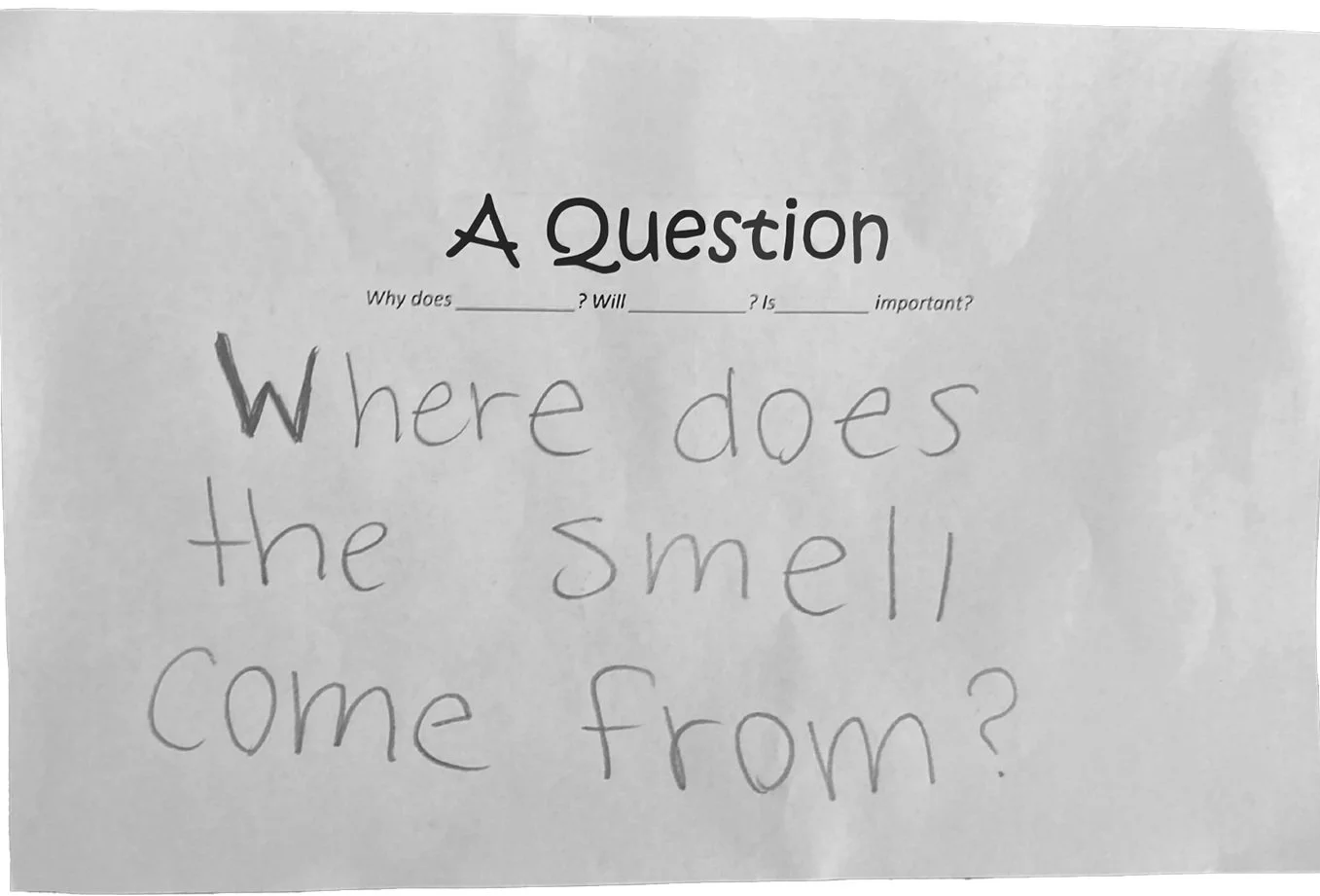Decomposition Investigation
In this fifth-grade investigation, students explore the phenomenon of plant matter decomposition. They make observations of fruits and vegetables decomposing and ask questions about what could cause the changes they see. These questions are then used to develop investigations exploring various aspects of decomposition. Students work together to determine what to place in the jars, what to pay attention to, and how to record their observations. At the end of the investigation, they use the evidence from their jars to develop claims about whether the factors they tested matter and to explain how and why decomposition occurs.
Context
The investigation is situated within a unit on decomposition, adapted from the NGSS Storylines Unit “Why Do Dead Things Disappear Over Time?”. Students are introduced to decomposition through exploring what happens to the body of a dead animal along the road. They begin to observe decomposition in their classroom, using a plastic container filled with soil and plant matter. They conduct observations over a few weeks as they engage in other lessons to understand the flow of matter and energy through ecosystems. As they make observations, they pose questions that support investigation and the development of further explanations.
Authors: This investigation was developed with Lindsay Weaver, Sam Patton, and Lorin Federico, Somerville Public Schools.
Click images to expand
NGSS Standards
5-LS2-1. Develop a model to describe the movement of matter among producers, consumers, decomposers, and the air, water, and soil in the environment to (a) show that plants produce sugars and plant materials, (b) show that animals can eat plants and/or other animals for food, and (c) show that some organisms, including fungi and bacteria, break down dead organisms and recycle some materials back to the air and soil.
Forms of Uncertainty
Among other uncertainties, students in these lessons are supported to engage with:
What factors matter and how they are related: Students begin to wonder what causes changes and differences they see in a decomposition chamber. They develop and discuss tentative explanations about what matters and why.
What questions to investigate: Students and teachers share responsibility for determining which of their questions are investigable and which are better answered in other ways.
How to develop an informative comparison: As they design their investigations, students have to make decisions that include-- but extend beyond-- controlling variables. For example, Students question how much water to add to their jars or what ranges of temperature they should use to answer their questions.
How to identify mechanisms: Even once students determine whether a factor like water matters, they also have to think about why and how it matters, which might not be obvious from the investigation—they use other resources like texts and websites to develop explanations of what they observed in their jars.
Explore the full Uncertainty Overview for this investigation to learn more about these and the other forms of uncertainty that students engage with in this investigation.
What Happens in This Investigation?
Engaging with the Phenomenon
The teacher creates a “decomposition chamber” that will allow students to observe the process of decomposition in their classroom. This is created by filling a plastic container with soil and plant matter (such as leaves, orange peels, apple cores, and lettuce). Students observe the chamber over 2 weeks—and begin to wonder and discuss what causes the changes that they see.
Planning and Conducting the Investigation
Students define and finalize their questions, then work in small groups to plan investigations. They consider how they will use materials such as glass jars, soil, water, fruits, and vegetables to represent the phenomenon and gather evidence that will help them answer their questions.
Explore related forms of uncertainty, instructional materials, and tools.
How to represent the phenomenon
Lesson 4: How can we develop questions to investigate?
Lesson 5: How can we plan an investigation to answer our questions?
Supporting Claims with Evidence
As students make observations of their jars, they gather evidence that they can use to support a claim that answers their investigation question. They share claims and evidence with each other, with others asking questions about the evidence they are using.
Explore related forms of uncertainty, instructional materials, and tools.
Lesson 6: What are we learning from the investigation?
Claims & Evidence Tool
Developing Explanations
Students use the evidence they have gathered to develop an explanation that explains how and why the factors they studied matter for decomposition. They support this explanation by conducting research using websites and texts.
They develop a slideshow to present their claims and explanation. They share with classmates and/or other members of the school community, answer questions about their findings, and make comparisons across investigations to deepen explanations.
Explore related forms of uncertainty, instructional materials, and tools.
Lesson 7: Final Presentations

